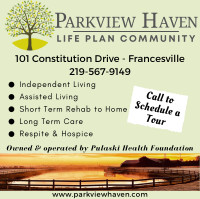Poverty Simulation: Understanding the realities
- Details
- Published: Thursday, 02 October 2014 03:03
By Karen Clem Fritz
Do you know the face of poverty?
If you subscribe to the usual stereotype, that the poor are lazy, unwilling to work, and spend their sparse means on beer, cigarettes and drugs – then you miss the mark by a long shot.
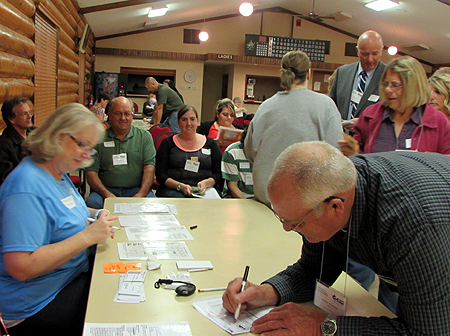 |
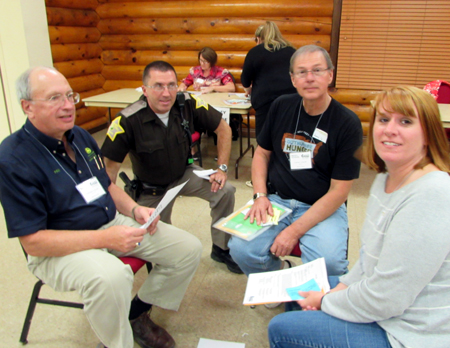 |
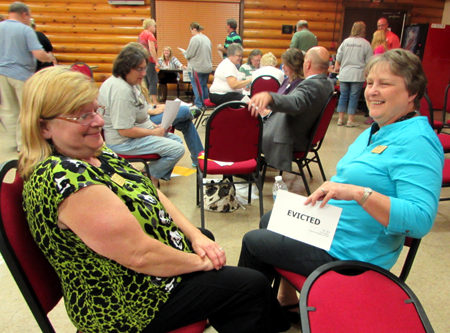 |
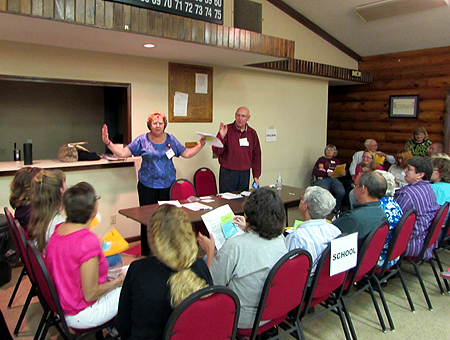 |
The face of poverty in Pulaski County is most likely to be that of a child – 20.8 percent of the county’s children under age 18 live in poverty. In the state of Indiana, 1 in 5 children go hungry every day. Many of the remaining poor are the faces of grandparents, some are the disabled, and others the “working poor” who hold one, two or more jobs, but whose incomes still fall below the poverty line.
That’s what about 70 county residents, who gave up three hours of their time, learned Tuesday evening (Sept. 30) at a Poverty Simulation exercise, sponsored by Purdue Extension Pulaski County.
“This program helps people understand the complexities and frustrations of living in poverty day-to-day,” said Natalie Daily Federer, county Extension director. “With a greater awareness of its impact, we can more effectively address the poverty issues in our community.”
In Indiana, the poverty rate has increased from 9.5 percent in 2000 to 16 percent in 2011, or over 1 million people living in poverty. In Pulaski County, the poverty rate was 13.9 percent in 2012. The county’s food stamp recipients in 2013 numbered 1,718 (of a population of 13,007). A total of 967 students were recipients of free or reduced-fee lunches out of a 2012-13 public school enrollment of 2,083. (U.S. Census figures)
In order to learn how to help meet the great need these figures indicate, one must first understand poverty.
“This is the everyday reality of thousands who live here in Indiana. Understanding that reality will help us change it,” said Federer.
“People don’t realize how hard it is,” said Karen Hinshaw who served as the facilitator for Tuesday’s exercise. She is the Extension director for Huntington County and has been leading Poverty Simulation programs across the state since 2006. “And we have to break down the stereotype that the poor are just lazy,” she added. “Some are and they stick out. They make it so much worse for the rest.”
The Poverty Experience
The Poverty Simulation experience is designed to help participants begin to understand what it might be like to live in a typical low-income family trying to survive from month-to-month. It is a simulation, not a game. The object is to sensitize participants to the realities faced by low-income people.
During the simulation, the participants assume the roles of up to 26 different “families” facing poverty. Some are newly unemployed, some are recently deserted by the family “breadwinner,” and others are recipients of TANF (Temporary Assistance for Needy Families), formerly AFDC, either with or without additional earned income. Still others are senior citizens receiving Social Security, or grandparents raising their grandchildren. Some participants play the roles of children. The task of the “families” is to provide for basic necessities and shelter during the course of four 15-minute “weeks.”
The simulation is conducted in a large room with the “families” seated in groups in the center. Around the perimeter are tables representing community resources and services for the families. These services may include a bank, super center, Community Action Agency, employer, utility company, pawn broker, grocery, DFS (welfare) office, payday and title loan facility, mortgage company, homeless shelter, school and childcare facility.
Volunteers are recruited to staff the resource tables. Volunteers are also recruited to assume the roles of police officers and an “illegal activities” person.
The exercise begins with an introduction and briefing. Then the “families” are given packets which explain their situation and needs – and the simulation begins. As the families plot their strategies and begin to visit the resource services, their lives are sometimes interrupted with “chance” cards which represent real-life issues, such as accidents, illnesses or unexpected opportunities for extra income. Sometimes the “illegal activities” person creates havoc by stealing from the families or offering lures of easy money by selling drugs. Some families find they can’t make mortgage payments and end up evicted from their homes and living in the homeless shelter. Others attempt to sell a gift to the pawn broker, only to learn it was stolen, and end up in jail. The challenges go on and on.
When the simulation ends, a debriefing period follows in which the participants and volunteers share their feelings and experiences and talk about what they learned about the lives of people in poverty.
What was the experience like?
When the “month” was over for the Pulaski County simulation, Hinshaw asked the participants, “How do you feel?”
The responses were immediate:
“Frustrated! Stressed, angry, disheartened … scared.”
All were surprised at how little time they had to take care of all their needs, how many hoops they had to jump through, and at how much waiting they had to endure. Respect and dignity were scarce commodities. There was little time to ask for help. The participants were asked how many agencies they thought people in poverty were usually obliged to visit in order to obtain assistance available to them. They guessed five or 12. The answer was an average of 25.
“It’s hard to get around to all these places to get the help they need,” Hinshaw said. “Poor people feel like they’re trying, trying, trying … and drowning.”
How easy would it be to give up?
Next she asked if any of the participants felt pressed, during the simulation, to do things they would normally never do. She received the answers she expected. A few resorted to stealing, begging, selling drugs, neglecting a child.
Then Hinshaw noted, “Sometimes we forget the impact of poverty on children.” So she asks those whose “families” included children:
“Did you ask the children about their day?” No.
“Did you help them with their homework?” Not many.
“Did you spend time with them?” Ummmm …
It begged the question, does poverty breed poverty?
What can we do?
Hinshaw surprised most when she said “money, alone, won’t fix poverty.”
The participants were urged not to leave the exercise without committing to make a difference in the war on poverty.
They were asked to share their experiences and what they learned with the community, with friends, in schools, churches and organizations. They were asked to volunteer with organizations that help people in poverty. They were also charged with writing letters and emails to government officials, business leaders and organizations to win support for policies and programs that can improve the lives of low-income people.
Finally, they were asked to socialize and make a habit to meet with people of all socioeconomic backgrounds to develop a relationship and sensitivity to their needs, and to learn to relate to them as people like themselves.
Lastly, Hinshaw asked the participants if, during the simulation, anyone was nice to them.
A few responded in the affirmative.
“How did that make you feel?” she asked.
“Hopeful” was the answer.
“You can be that person,” she concluded. “You can give hope.”
About Poverty Simulation
The Community Action Poverty Simulation (CAPS) was designed to help people better understand the realities of poverty.
CAPS enables participants to look at poverty from a variety of angles and then to recognize and discuss the potential for change within their local communities, said Elaine West, executive director of the Missouri Association for Community Action, which made the simulation available nationwide. The simulation was designed to sensitize those who frequently deal with low-income families as well as to create a broader awareness of poverty among policymakers, community leaders and others.
The Missouri Association for Community Action is a network of community action agencies throughout the state that provide a variety of services to low-income individuals and families. To learn more visit www.communityaction.org
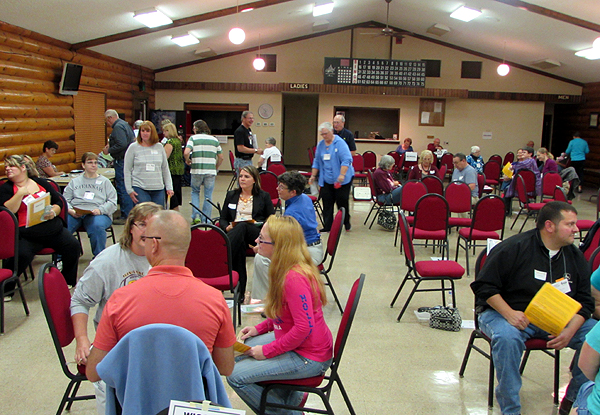 |
Poverty Simulation: About 70 Pulaski County residents had an opportunity to gain a better understanding of the complexities and frustrations of living in poverty day-to-day, at a Poverty Simulation exercise Tuesday evening in Winamac. The event, sponsored by Purdue Extension Pulaski County, was held at the Knights of Columbus Hall. The program is designed to create a broader awareness of poverty among policymakers, community leaders and others. |





